Randall C. O'Reilly
Flexible Prefrontal Control over Hippocampal Episodic Memory for Goal-Directed Generalization
Mar 04, 2025Abstract:Many tasks require flexibly modifying perception and behavior based on current goals. Humans can retrieve episodic memories from days to years ago, using them to contextualize and generalize behaviors across novel but structurally related situations. The brain's ability to control episodic memories based on task demands is often attributed to interactions between the prefrontal cortex (PFC) and hippocampus (HPC). We propose a reinforcement learning model that incorporates a PFC-HPC interaction mechanism for goal-directed generalization. In our model, the PFC learns to generate query-key representations to encode and retrieve goal-relevant episodic memories, modulating HPC memories top-down based on current task demands. Moreover, the PFC adapts its encoding and retrieval strategies dynamically when faced with multiple goals presented in a blocked, rather than interleaved, manner. Our results show that: (1) combining working memory with selectively retrieved episodic memory allows transfer of decisions among similar environments or situations, (2) top-down control from PFC over HPC improves learning of arbitrary structural associations between events for generalization to novel environments compared to a bottom-up sensory-driven approach, and (3) the PFC encodes generalizable representations during both encoding and retrieval of goal-relevant memories, whereas the HPC exhibits event-specific representations. Together, these findings highlight the importance of goal-directed prefrontal control over hippocampal episodic memory for decision-making in novel situations and suggest a computational mechanism by which PFC-HPC interactions enable flexible behavior.
A Neural Network Model of Continual Learning with Cognitive Control
Feb 09, 2022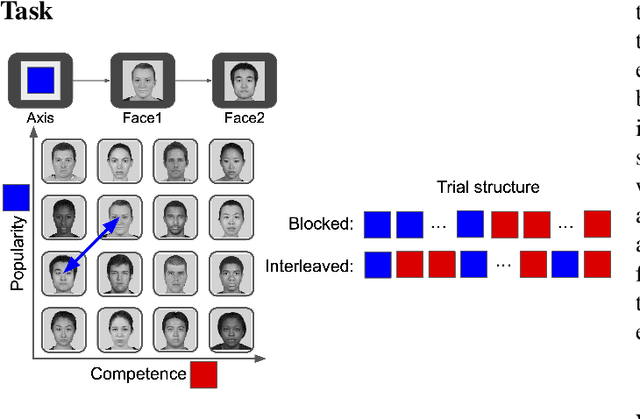
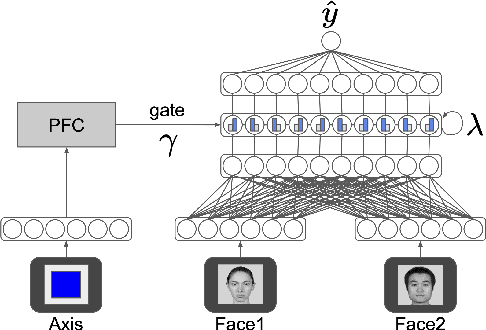
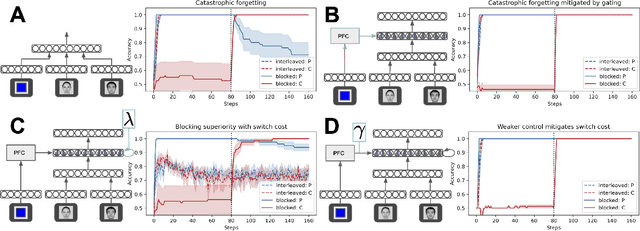
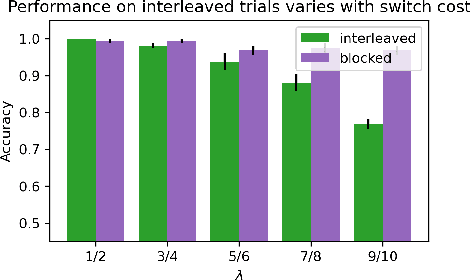
Abstract:Neural networks struggle in continual learning settings from catastrophic forgetting: when trials are blocked, new learning can overwrite the learning from previous blocks. Humans learn effectively in these settings, in some cases even showing an advantage of blocking, suggesting the brain contains mechanisms to overcome this problem. Here, we build on previous work and show that neural networks equipped with a mechanism for cognitive control do not exhibit catastrophic forgetting when trials are blocked. We further show an advantage of blocking over interleaving when there is a bias for active maintenance in the control signal, implying a tradeoff between maintenance and the strength of control. Analyses of map-like representations learned by the networks provided additional insights into these mechanisms. Our work highlights the potential of cognitive control to aid continual learning in neural networks, and offers an explanation for the advantage of blocking that has been observed in humans.
Locally Learned Synaptic Dropout for Complete Bayesian Inference
Nov 29, 2021
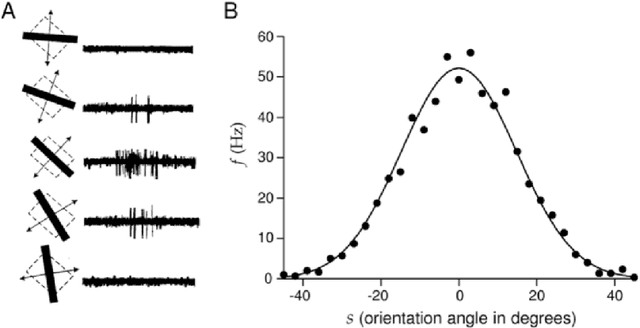
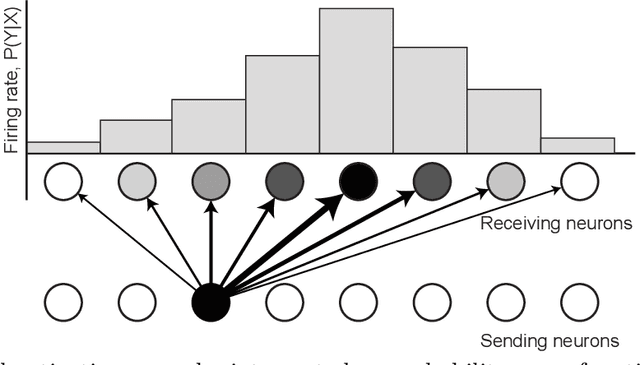

Abstract:The Bayesian brain hypothesis postulates that the brain accurately operates on statistical distributions according to Bayes' theorem. The random failure of presynaptic vesicles to release neurotransmitters may allow the brain to sample from posterior distributions of network parameters, interpreted as epistemic uncertainty. It has not been shown previously how random failures might allow networks to sample from observed distributions, also known as aleatoric or residual uncertainty. Sampling from both distributions enables probabilistic inference, efficient search, and creative or generative problem solving. We demonstrate that under a population-code based interpretation of neural activity, both types of distribution can be represented and sampled with synaptic failure alone. We first define a biologically constrained neural network and sampling scheme based on synaptic failure and lateral inhibition. Within this framework, we derive drop-out based epistemic uncertainty, then prove an analytic mapping from synaptic efficacy to release probability that allows networks to sample from arbitrary, learned distributions represented by a receiving layer. Second, our result leads to a local learning rule by which synapses adapt their release probabilities. Our result demonstrates complete Bayesian inference, related to the variational learning method of dropout, in a biologically constrained network using only locally-learned synaptic failure rates.
Complementary Structure-Learning Neural Networks for Relational Reasoning
May 19, 2021



Abstract:The neural mechanisms supporting flexible relational inferences, especially in novel situations, are a major focus of current research. In the complementary learning systems framework, pattern separation in the hippocampus allows rapid learning in novel environments, while slower learning in neocortex accumulates small weight changes to extract systematic structure from well-learned environments. In this work, we adapt this framework to a task from a recent fMRI experiment where novel transitive inferences must be made according to implicit relational structure. We show that computational models capturing the basic cognitive properties of these two systems can explain relational transitive inferences in both familiar and novel environments, and reproduce key phenomena observed in the fMRI experiment.
Learning Representations that Support Extrapolation
Jul 09, 2020

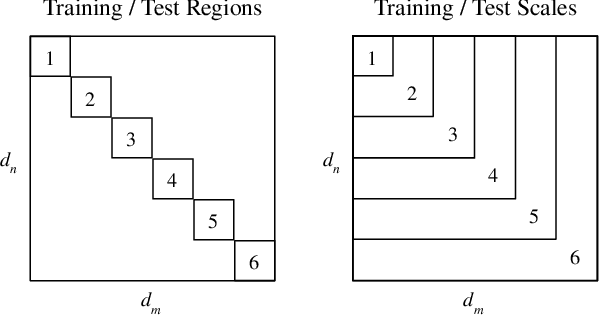

Abstract:Extrapolation -- the ability to make inferences that go beyond the scope of one's experiences -- is a hallmark of human intelligence. By contrast, the generalization exhibited by contemporary neural network algorithms is largely limited to interpolation between data points in their training corpora. In this paper, we consider the challenge of learning representations that support extrapolation. We introduce a novel visual analogy benchmark that allows the graded evaluation of extrapolation as a function of distance from the convex domain defined by the training data. We also introduce a simple technique, context normalization, that encourages representations that emphasize the relations between objects. We find that this technique enables a significant improvement in the ability to extrapolate, considerably outperforming a number of competitive techniques.
Compositional generalization in a deep seq2seq model by separating syntax and semantics
May 23, 2019



Abstract:Standard methods in deep learning for natural language processing fail to capture the compositional structure of human language that allows for systematic generalization outside of the training distribution. However, human learners readily generalize in this way, e.g. by applying known grammatical rules to novel words. Inspired by work in neuroscience suggesting separate brain systems for syntactic and semantic processing, we implement a modification to standard approaches in neural machine translation, imposing an analogous separation. The novel model, which we call Syntactic Attention, substantially outperforms standard methods in deep learning on the SCAN dataset, a compositional generalization task, without any hand-engineered features or additional supervision. Our work suggests that separating syntactic from semantic learning may be a useful heuristic for capturing compositional structure.
 Add to Chrome
Add to Chrome Add to Firefox
Add to Firefox Add to Edge
Add to Edge